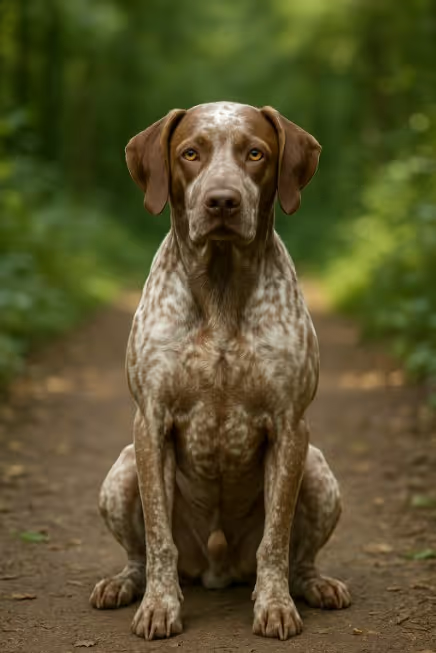The Braque du Bourbonnais is a gentle, medium-sized French pointing dog famed for its pear-shaped head, soft expression, and “faded” roan coat in peach (fawn) or lilac (liver) tones. Calm and cuddly at home yet energetic in the field, the Bourbonnais is biddable, affectionate, and thrives with active owners who enjoy training, hiking, and scent work. If you’re searching “Are Braque du Bourbonnais good apartment dogs?”—yes, for active homes that meet exercise needs. “Do Braque du Bourbonnais shed?”—light to moderate.

Originating in France’s Bourbonnais region (central France), the breed appears in texts and art from the 16th century onward. Hunters valued a compact, close-working pointing dog with a keen nose, cooperative temperament, and distinctive faded roan coat. Numbers declined after the World Wars; dedicated breeders restored the population in the late 20th century, preserving its classic look and easygoing field style. Today the Braque du Bourbonnais competes in field trials and thrives as an active family companion across Europe and North America.
A balanced, athletic gun dog with a sculpted head and smooth, efficient trot.
Low-maintenance coat; prioritize ears and skin after field days.
A purposeful athlete built for sustained, efficient movement.
Soft-natured, eager to please, and scent-driven—keep it positive and structured.
Fuel lean muscle and sustained energy without extra bulk.
Generally robust; responsible screening and thoughtful breeding matter.
Uncommon in Canada—plan ahead and verify health/testing.
Are Braque du Bourbonnais good apartment dogs?
Yes—if you provide 60–90 minutes of daily exercise, training, and enrichment.
Do Braque du Bourbonnais shed?
Light to moderate; a weekly brush controls hair and dander.
Are Braque du Bourbonnais hypoallergenic?
No. They are not hypoallergenic.
How much exercise does a Braque du Bourbonnais need?
Plan for 60–90 minutes daily, ideally with field drills or nose work.
What does “peach” or “lilac” coat mean?
Traditional terms for fawn (peach) or liver (lilac) roan—both with a “faded” ticked look.
Do they have natural short tails?
Some are born with a natural bobtail; others have full tails. Both occur in the breed.
Braque du Bourbonnais vs German Shorthaired Pointer—what’s different?
Bourbonnais are typically more compact, trot-focused, and soft-natured; GSPs are often rangier, faster gallopers. Individual lines vary—meet breeders’ dogs.
Are they good with kids and other pets?
Generally affectionate and gentle with early socialization; supervise around small pets due to prey drive.
What health tests should breeders do?
Hips (and elbows where applicable) and CAER eye exams; discuss tail genetics and family history of orthopedic/eye issues.